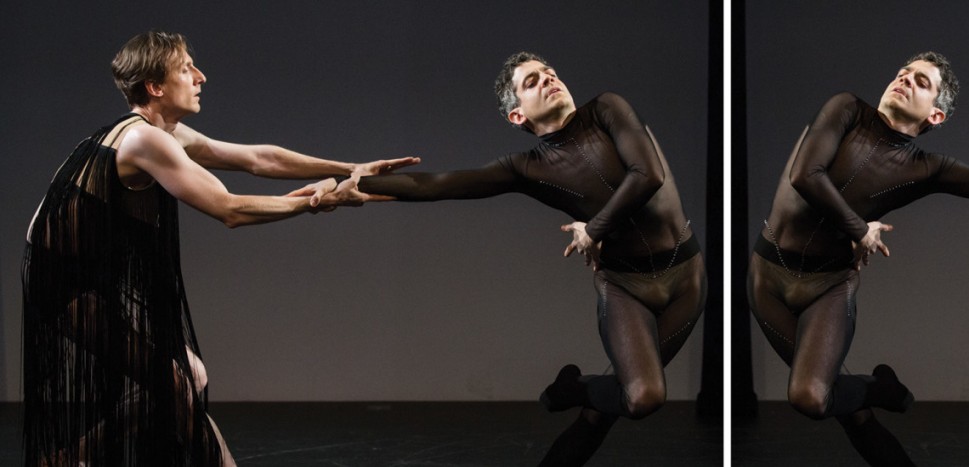Everything Is Imaginable
Jack Ferver
American Realness at New York Live Arts
January 7-12, 2019
What makes a young gay boy, perceiving himself to be different, feel safe or whole? Who gives him inspiration, or permission, to be something he wants to be? In the first half of Everything Is Imaginable, Jack Ferver gives us a fantasia parade of such figures. One by one, his soloists—James Whiteside, Lloyd Knight, Garen Scribner, and Reid Bartelme, dancers coming from different performance traditions—take the stage, each presenting their childhood idol as a kind of character sketch: the emotive diva (Judy Garland), the elegant pioneer (Martha Graham), the charismatic athlete (Brian Boitano), and the fabulous beast (yes, that would be My Little Pony).
In this sequence, the dancers’ virtuosity is a source of great pleasure—as are their bodies, which are exquisitely framed in costumes by Reid and Harriet Design. Moments of wit abound, as when Bartelme (whose unflappably dignified, absolutely flaming pony was a personal highlight) opens his mouth and twittering birdsong comes out. This moment points specifically at a current that runs, for me, underneath the four men’s performances. They are paying fond tribute to their heroes, certainly, but the carefully calibrated camp of these solos also presents four archetypes of how gay men might be culturally perceived or expected to look like, move like, sound like. This section culminates in a raunchy, ridiculous showstopper in which all four dancers high-kick, grind, and mime all manner of sex acts while keeping perfect time. It’s a complex moment, both a joyous celebration and a sly provocation: Look at these cheerful sex-crazed entertainers with sculpted bodies and fierce rhythm! That’s what you want from us, right?
The second half of the performance continues to complicate this depiction. After a brief intermission, Ferver himself takes the stage, alone. He shares stories of injury and humiliation, and introduces us to his own idol: Catwoman. Horror-film music underscores the monstrosity of the character as Ferver contorts his body with twisted movements that contrast sharply with the playfully erotic displays of the first half. Here is a darker kind of hero for a bullied child, a powerful and embittered other bent on revenge. And here is another public face of gay masculinity: illness, predation, abjection, death.
Ferver’s last words in the piece offer a sense of the pressure all of these models can produce—the heroes and villains, fantastic beasts and monsters, self-valuations and societal expectations: “He can’t put it together.”
[Photo: Maria Baranova]

